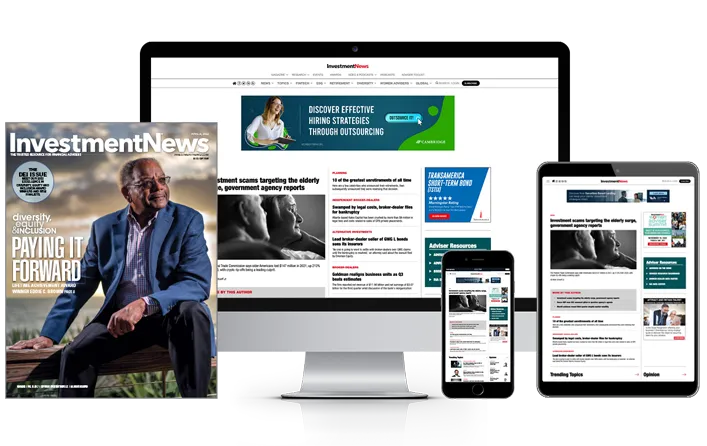Maybe American Funds Growth Fund of America should be renamed American Funds Index Fund of America. The $115 billion fund, the largest equity mutual fund in the world, is tracking its benchmark more closely than ever before — and it is not alone.
Maybe American Funds Growth Fund of America should be renamed American Funds Index Fund of America.
That's because the $115 billion fund, the largest equity mutual fund in the world, is tracking its benchmark more closely than ever before.
According to Morningstar Inc., the fund has the dubious distinction of having a three-year R-squared of 98 to the Russell 1000 Growth Index, up from 77 five years ago. The R-squared measures the strength of a statistical relationship. The higher the number, the closer the relationship between two variables.
Generally speaking, a fund is highly correlated to its benchmark index if its R-squared reaches 90.
At 95, it is considered a ”closet” index fund.
To be sure, American Funds Growth Fund of America (AGTHX), which is run by Capital Group Cos. Inc., is not entirely to blame — and is not alone. That's because the steady rise in correlations among stocks across the board is making it more difficult than ever for actively managed funds to differentiate themselves from their benchmarks.
And the 10 largest actively managed stocks fund in the world — which include the Fidelity Contrafund (FCNTX), the T. Rowe Price Growth Stock Fund (PRGFX) and the BlackRock Equity Dividend Fund (MDDVX) — now have an average three-year R-squared of 97, up from 83 in 2007, Morningstar said.
Believe it or not, those 10 funds are doing better than their peers. The average large-cap-blend fund has an R-squared of 99.7.
“I don't think these fund managers have a choice,” said Brendan Clark, president of Clark Capital Management Group Inc. “You could certainly take the position that they're closet indexers, but it's the underlying condition of the market that's causing it.”
Still, given how closely many large-cap managers are tracking their benchmarks, some advisers are beginning to ask: Why pay the extra costs of active management?
“If I buy an active fund in the large-cap space, I want somebody who's going to do something over the long term to outperform,” said Roger Wohlner, a financial planner at Asset Strategy Consultants. “Why pay 70 or 80 basis points for active management that doesn't give you much differentiation from the index?”
The alternative to active funds, of course, is passive index funds or exchange-traded funds, which have been drawing significant attention and assets over the past few years. Ironically, the popularity of passive investing is one of the culprits behind the increased correlation that is making active managers' lives more difficult.
Over the past three years, almost $150 billion has flowed into passive stock funds, while more than $300 billion has been withdrawn from actively managed stock funds.
With passive funds, especially ETFs, investors can easily buy or sell a bucket of stocks, such as those in the S&P 500, in a single trade. Some experts point to the growth of these funds, which had about $300 billion of inflows over the three-year period through July, as one of the drivers of the increased correlation.
DOWNSIDE PROTECTION
So there is the possibility that as investors continue to pile into passive investments, correlations will remain high, which means that active managers will continue to struggle to add value and even more money will move from active funds to passive funds.
Still, there is one way that active managers can make a big difference, said Kevin McDevitt, a mutual fund analyst at Morningstar.
Traditionally, people look to active managers to outperform the market, but he argues that differentiation from a benchmark should be more about downside protection.
After all, passive funds — unlike their active counterparts — can't do anything to defend themselves when the market is tanking.
Downside protection is one of the reasons that led Mr. Wohlner to rush some of his clients into the $5.5 billion Sequoia Fund (SEQUX) when it briefly opened to new investors in 2008. As the S&P 500 fell 37% in 2008, the Sequoia Fund fell 27%.
jkephart@investmentnews.com Twitter: @ jasonkephart






